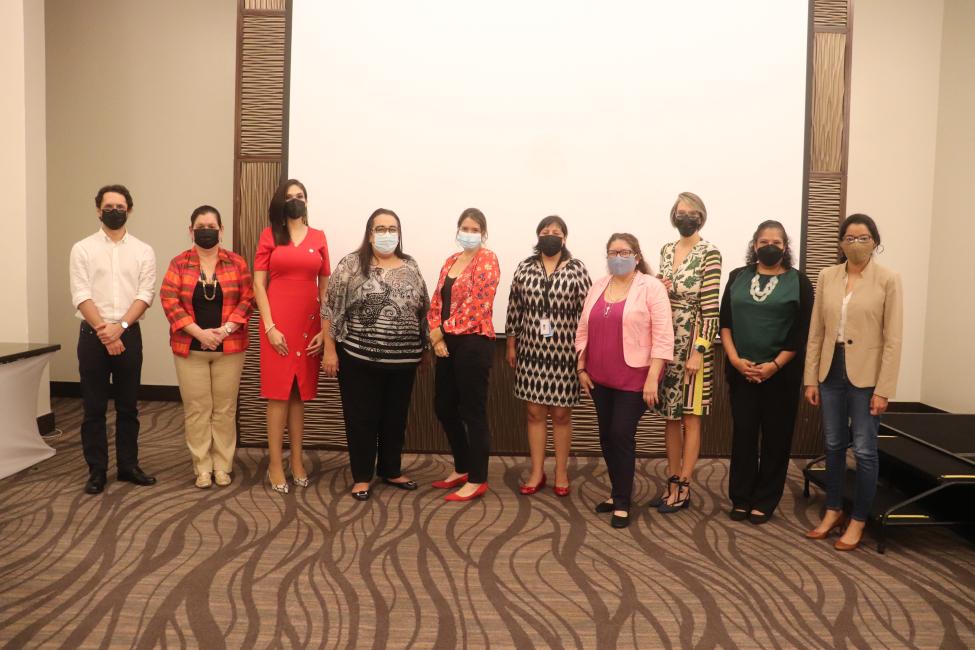-
Quiénes Somos
Quienes somosLa Organización Internacional para las Migraciones (OIM) forma parte del Sistema de las Naciones Unidas y es la organización intergubernamental líder que promueve desde 1951 una migración humana y ordenada para beneficio de todos, con 174 Estados Miembros y presencia en más de 100 países. La OIM tiene presencia en Panamá desde 2007.
Sobre nosotros
Sobre nosotros
OIM Global
OIM Global
-
Nuestro Trabajo
Nuestro TrabajoComo organización intergubernamental líder que desde 1951 promueve la migración humana y ordenada, la OIM juega un rol clave en cuanto a apoyar el logro de la Agenda 2030 por medio de diferentes áreas de intervención que conectan a la asistencia humanitaria con el desarrollo sostenible. En Panamá, la OIM ofrece una respuesta integral a las necesidades humanitarias de los migrantes, los desplazados internos, los repatriados y las comunidades de acogida.
Prioridades transversales
Prioridades transversales
- Datos y Recursos
- Actúa
- 2030 Agenda
International Cooperation in Panama, through the Human Mobility Group
For many years, the Republic of Panama has had an increase in the flows of extraregional migrants transiting irregularly from Colombia, through the Darien jungle, to North America. Likewise, the needs for humanitarian response in the border communities were increasing. Therefore, the United Nations System in Panama decided to establish an interagency group on human mobility that would be co-led by the International Organization for Migration (IOM) and the United Nations High Commissioner for Refugees (UNHCR).
As the partnership progressed and other agencies, funds and programs of the United Nations System were incorporated in Panama, in 2020 the mechanism evolved into what is currently known as the Human Mobility Group, working directly with the Panamanian government to ensure safe, orderly, and regular migration in the country.
The objective of the Human Mobility Group is to be an operational coordination space dedicated to the humanitarian response that the United Nations System and its partners can provide to meet the protection and humanitarian assistance needs of the migrant population and host communities, and by incorporating a human rights-based approach and sustainable development.
At the time, IOM was operating in La Peñita, a small host community for extraregional migrants transiting from the Colombian border. Given the risks of crossing through the Darien Gap, migrants who transit on foot and in small boats usually arrived at La Peñita with signs of dehydration, malnutrition, insect bites, and with swollen feet.
When the Government of Panama closed all borders as a sanitary measure to prevent the spread of COVID-19, the number of migrants who could no longer continue their journey increased rapidly in border communities. Initial reports indicated that at least 2500 migrants were stranded in Panama, and although a partial opening of the border was proposed, only regular migrants and business travelers were considered. The growing number of stranded migrants quickly exceeded the accommodation capacities at the La Peñita migrant reception station (ERM for its Spanish acronym), which had capacity for 200 beneficiaries.
Looking for alternatives to La Peñita, the opportunity to build a new migration reception station (ERM acronym in Spanish) in San Vicente was identified. This station would completely replace the ERM of La Peñita and expand the shelter capacities. It was built on a plot of land made available by the national government, with IOM being one of the organizations that provided technical guidance during the planning process of this site, in order to ensure its adaptation to humanitarian standards and environmental considerations that reflected the tropical and humid environment where it would be installed.
In addition, the Organization obtained water supply materials, computers and biometric registration equipment, multipurpose tents and other construction materials, centralizing all reception operations in an appropriate space that allowed for the full implementation of social distancing and other infection prevention protocols. The ERM of San Vicente has the capacity to house 1000 migrants, five times more than the previous center in La Peñita.
IOM was also involved in the adjustments made to the Lajas Blancas migrant reception station, located in the Emberá-Wounaan region. This center was adapted to serve as an isolation center for migrants who had tested positive for COVID-19, as well as their families. IOM contributed to the construction of multiple modules in the complex, such as those used by health personnel, food preparation and distribution spaces, among others.
Inter-agency coordination proved to be instrumental in providing humanitarian assistance to migrants during this period. These coordination spaces allowed the agencies, funds and programmes of the United Nations System to act in accordance with their mandates and explore synergies between the members of the Human Mobility Group, being of particular importance during this period the coordination related to the supply chain and donation management, which helped prevent underutilization of resources and duplication of efforts.
This, together with the strengthening of direct contact with the national government, proved that it is possible to replicate the intervention in similar emergency situations, focusing on the protection of stranded migrants to provide humanitarian assistance with dignity to mitigate their suffering.
It should be noted that the previous knowledge about the target population, achieved through tools such as the Displacement Tracking Matrix to map the needs and number of migrants in the ERM, could be used to make the actions more precise and adapted to the specific context. This knowledge was also applied to boost fundraising and reschedule efforts with multiple donors.
After several months of virtual meetings and field coordinations, on January 14, 2022, the Human Mobility Group had its first regular meeting of the year to review, adjust, and validate the proposed 2022-2025 work plan. This document will be presented in the coming weeks to the United Nations Country Team in Panama.
For more information, contact IOM Panama's communications team via iompanama@iom.int.




